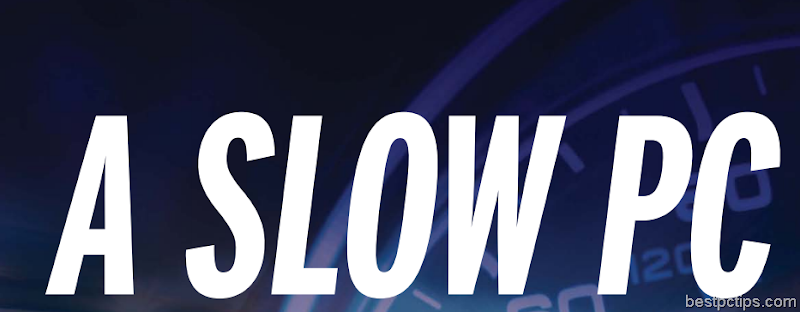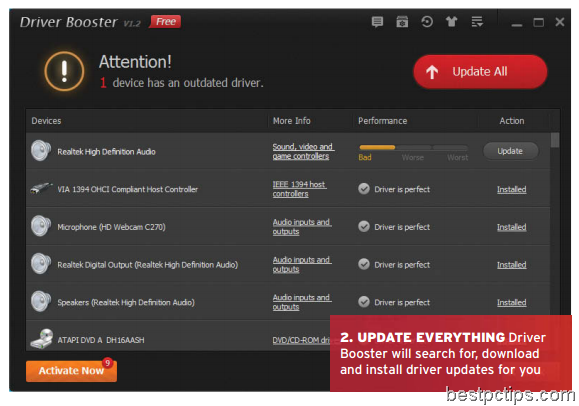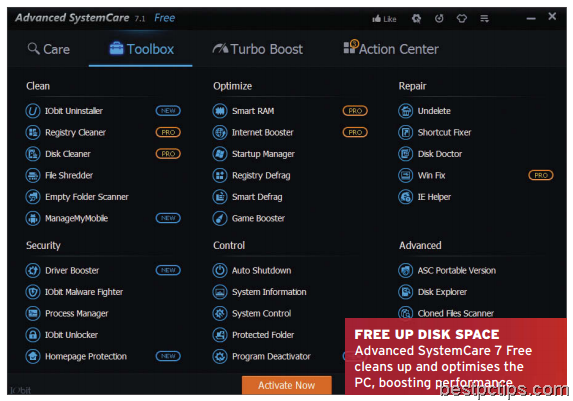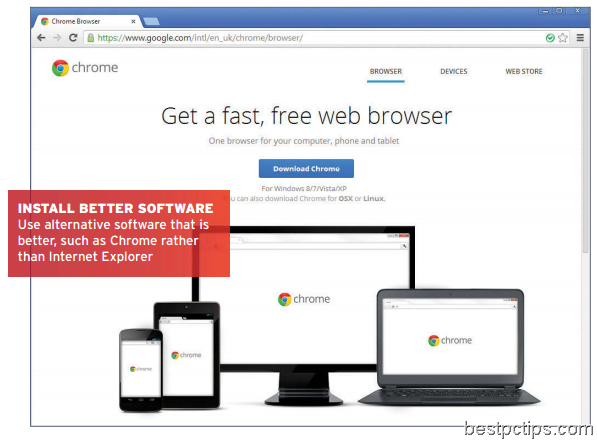If your PC seems sluggish, you can revive its performance using these simple techniques. STR shows you how.

Computers slow down over time. What was once a fast system can become slow and irritating to use after a couple of years. A new PC always impresses with the speed at which it starts up and runs Windows and other software, but it will become noticeably slower after being used for some time. It is frustrating the way that computers can take several minutes to start up or shut down, especially when everything slows to a crawl before you’ve even paid off the loan. Eventually, things get so bad you might even give up completely and buy a new computer.
Fortunately, there are ways of tackling the lethargy to restore most of your PC’s original speed, which means you shouldn’t need to spend any money on a new machine. This prolongs the life of the computer and reduces the annoyance factor that inevitably builds when using old hardware. Treasure Valley IT provides computer repair services in Star if you need someone to look at your PC. Here, we’ll look at five ways you can speed up a Windows PC. Clean up Windows Part of the reason old PCs take so long to start is because of all the programs and utilities you’ve installed. Reducing the number of applications that start up when Windows boots enables you to get going faster and increases the available memory.

Click the arrow at the right side of the taskbar to display notification icons. Each is a program that loads with Windows. Some are essential – antivirus software, for example – but others may not be. Right-click each in turn and, if there is a Settings menu, use this to find an option to prevent it starting automatically with Windows. Some programs, such as Google Drive, can be manually started when they are required, and don’t need to be running on your PC at all times.
Next, hit Windows, R, type msconfig and click Ok. Select the Services tab, tick ‘Hide all Microsoft services’ and see what’s left.
There may be services you can live without and clearing the tick box prevents them from running. For example, Firefox works perfectly well without the Mozilla Maintenance Service.
On the Startup tab are lots of programs that start with Windows. Knowing what to disable isn’t easy, but you can use Google to search for items and see whether they are necessary, useful or neither.
Recent versions of Windows automatically defragment the hard disk, but Microsoft’s tool is basic and there are better defragmenters out there. Programs including O&O Defrag (oo-software.com) are excellent, but iObit’s Smart Defrag 3 (iobit.com) is nearly as good and it’s free.
The ultimate speed-boosting technique is to reinstall Windows. This removes unwanted software that slows down a PC, erases malware, clears out junk files and more.
A Windows disc is required to reinstall older versions of Windows, but Windows 8 has a built-in Refresh option that eases the job. Open the Charms bar and click Settings, then ‘Change PC settings’. Click ‘Update and recovery’, then choose Recovery. Under ‘Refresh your PC without affecting your files’, click Get started.
Personal fi les – photos, music and documents – will remain on your PC, so this isn’t a complete refresh, but it may be enough for most people.
A more powerful option is ‘Remove everything and reinstall Windows’. Be sure to back up any fi les you want to keep to a USB drive, then select this option to restore the PC’s original performance.

2Update everything Out-of-date drivers, programs and Windows itself can cause the computer to run slowly.
Faulty drivers, for example, stop Windows shutting down or cause it to start more slowly. Video-card drivers are often updated to fix bugs and boost performance, and it is always a good idea to check that you have the latest version. Even if Windows updates are automatic, go to Windows Update in the Control Panel and manually check for updates. Only essential ones are installed automatically and there may be useful optional items available.
Drivers are programs that enable Windows to access hardware components such as the video, sound, printer, scanner, webcam and so on. Updating them is a pain and you have to identify the hardware, the drivers and version numbers, the hardware manufacturer’s website and the download page. Take a shortcut by using a free tool such as SlimDrivers (slimwareutilities.com) or Driver Booster Free (iobit.com). You’ll also find UpdateStar on our Cover Disc+. These do all the work for you, identifying the current drivers, then checking for, downloading and installing any available updates. They can solve a lot of problems.

3Free up disk space Your PC’s hard disk slows down as it fills up. Uninstalling software helps to free up space, giving more room for Windows to work faster. Disk space can also be recovered using Ccleaner (piriform.com), Anti Tracks Free Edition (giantmatrix.com), Advanced System Care 7 Free (iobit.com) and others.
There’s a right- and a wrong way to use these utilities, though. Select just a few items and clean them, making sure the app backs up the changes. If the PC is working okay, go ahead and clean a few more items; if it isn’t, restore the backup. Do not clean everything in one go: if something goes wrong you won’t know where the problem lies.
For uninstalling programs you could go to the Control Panel, open ‘Programs and Features’, and then uninstall software you haven’t used in the past six months.
Better still are free utilities such as iObit Uninstaller 3 (iobit.com), Revo Uninstaller (revouninstaller.com) and Wise Program Uninstaller (wisecleaner.com). They do a better job of removing software because, in addition to removing the program itself, they clean the disk and Registry.
Some programs install lots of fi les into Windows and they can have a detrimental effect on performance. To keep Windows clean and fast you should avoid installing anything. Of course, you need software, but there are many portable apps that don’t need installing. A good source of software is portableapps.com. Click Get Apps and you’ll find office software, graphics- and photo editors, utilities, internet browsers, music- and video players and more. It’s not the only place to fi nd portable software, but it’s a good place to start.
4Install better software Sometimes it’s possible to improve the PC’s performance by installing better software.

The speed difference between Internet Explorer 8 and Chrome on Windows XP is huge, so it’s a must-have upgrade. Chrome is still the fastest web browser even on Windows 8, and it’s the one we recommend for performance.
Smaller, lightweight programs are often faster than big, full-featured applications.
Do you need Word or is WordPad sufficient? Microsoft Office Home and Student 2013 requires 3GB of disk space, but LibreOffice (libreOffice.org) and Kingsoft Office (kingsoftstore.co.uk) work with just 300MB.
You need 4GB of disk space to install Adobe Photoshop Elements, but only 40MB for Paint.NET (getpaint.net) and 150MB for GIMP (gimp.org). These could be all you need for photo editing. Use alternativeto.net to fi nd alternatives to popular software.
The speed at which games run is highly dependent on the screen resolution and special effects used. Some games provide options to select the screen mode and to turn off some effects that tax the processor and graphics card. This can make a slow game more playable by increasing the framerate.
For more tips see tinyurl.com/mu4o58f.
5Upgrade the hardware All the techniques discussed so far for speeding up the PC take you only so far.
They restore the original PC’s performance, but this may not be sufficient. An old PC might not be capable of running the latest games or other software you want to use.
A five-year-old model will struggle with the latest games, apps and operating system.
For this reason, a hardware upgrade may be required. It will boost the PC’s performance beyond its original spec, and narrow the gap between your current PC and the latest ones.
Many old PCs suffer from too little memory (consider 2GB the absolute minimum these days, but 4GB is the maximum usable by 32-bit versions of Windows) and this is the first component to consider upgrading.
Memory suppliers including crucial.com/uk have tools on their website that identify what type of RAM you need. It shows the maximum the desktop PC or laptop can take, and this is the best upgrade you can perform.
Before you purchase any memory, though, examine your PC or laptop: some are easy to upgrade; others are more difficult.
Buying RAM online and installing it yourself is the cheapest option, but if you aren’t confident in your DIY skills, local computer shops can do the job on your behalf.
A solid-state disk (SSD) offers another way to boost your computer’s performance. Note that you will need to clone the old disk drive on to the new SSD before installing it. This is achieved by plugging the SSD into the PC’s USB port and running a program on the PC.
A special cable and software might be supplied with the SSD; if not, they are available to purchase for a few pounds.
Upgrading the graphics card is a great way to speed up games, but the benefits to other software is limited. Top-of-the-range video cards are big, so before ordering the latest nVidia or AMD model check it will fit inside the computer’s case. Space, the size of the PC’s PSU and other factors limit your options.
Full-height/dual-slot video cards are for big PCs with lots of space; low-profile single-slot cards are for compact PCs.
7Review earns Amazon affiliate commissions from qualifying purchases. You can support the site directly via Paypal donations ☕. Thank you!
We will be happy to hear your thoughts




